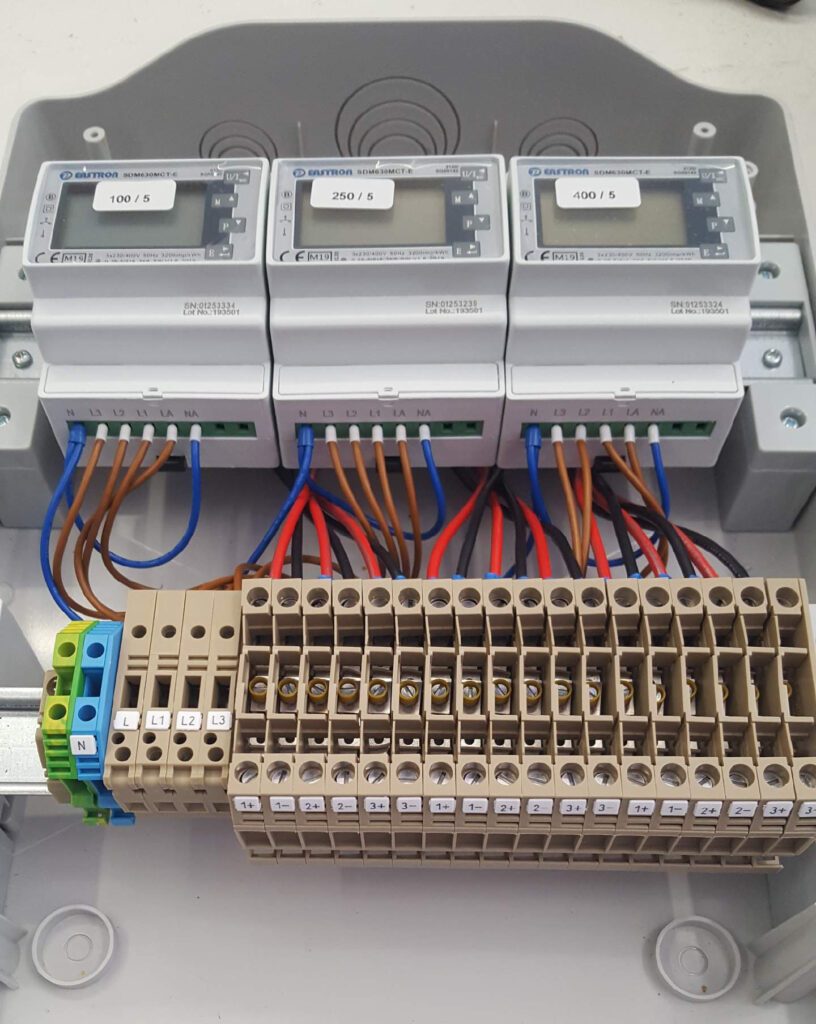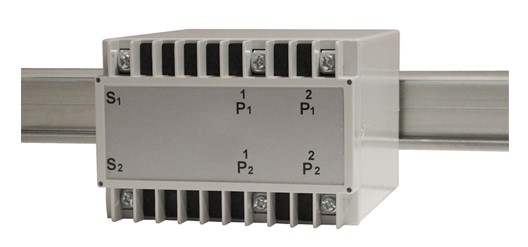The Advantages of Multiple Circuit Metering

Summation CTs
In the context of Multiple Circuit Metering, the term ‘summation’ refers to the process of adding together or totaling the measurements of multiple circuits.
This is used in situations where meters are installed to measure the production or usage of electricity.
The summation process involves collecting the readings or data from each individual circuit and combining these to obtain a total measurement. This measurement then provides a comprehensive view of the total usage or production of the resource being metered.
At PJW Meters we can set up Summation Metering system for you, through the use of various methods, including the use of a summation current transformer. This is a type of CT designed to combine the currents from multiple sources into a single output. It is commonly used in applications where it is necessary to measure the total current flowing through multiple phases.
How a summation CT works:

Without getting too technical, the process works like this:
- Multiple Current Inputs: A summation CT has multiple primary windings, typically one for each current-carrying conductor or phase that needs to be measured. These primary windings are connected in series with their respective conductors.
- Current Transformation: As current flows through each primary winding, it generates a magnetic field within the core of the CT. This magnetic field induces a proportional current in the secondary winding of each primary winding.
- Secondary Windings: The secondary windings of each primary winding produce separate output currents that are proportional to the currents flowing through the corresponding conductors. These individual secondary currents represent the measurements of each individual conductor or phase.
- Summing the Outputs: The outputs of the secondary windings are combined or summed together to obtain a cumulative measurement of the total current. This can be achieved through different methods, depending on the specific CT design and application.
- Electronic Summation: In electronic summation, the secondary windings are connected to electronic circuitry that adds or sums up the individual output currents. The circuitry may include operational amplifiers or other summing devices.
- Physical Summation: In physical summation, the outputs of the secondary windings are physically connected together using additional conductors or busbars. The connection point becomes the combined output of the summation CT.
- Total Current Measurement: The summed output represents the total current flowing through all the conductors or phases being measured. This cumulative measurement provides an accurate representation of the overall current, taking into account the contribution from each individual conductor.
It’s important to note that the design and use of summation CTs can vary based on a variety of requirements and the number of conductors or phases being measured. The CT may also include burden resistors, burden connections, or additional circuitry depending on the specific application needs.
Summation CTs are commonly used in electrical distribution systems, energy monitoring, and other applications where it is necessary to measure the combined current from multiple sources accurately.


Multiple summation metering offers several advantages:
- Comprehensive Measurement: Multiple summation metering allows for the measurement of the total consumption or production across multiple points or locations. It provides a complete view of the overall usage or production, giving a more accurate representation of the total quantity.
- Accurate Billing and Allocation: By combining the measurements from individual meters, multiple summation metering enables accurate billing and allocation of resources. It ensures that each point or location contributes to the total consumption or production correctly, which is important for fair and precise billing or cost allocation.
- Energy Management and Conservation: Having a cumulative measurement of resource usage helps in effective energy management and conservation efforts. It enables identification of areas with high consumption, facilitates comparison across locations, and assists in implementing energy-saving measures where needed.
- Centralized Monitoring and Reporting: Multiple summation metering allows for centralized monitoring and reporting of resource usage. The data collected from individual meters can be sent to a central system, making it easier to analyze trends, generate reports, and make informed decisions for better resource management.
- System Analysis and Optimization: By having an aggregated view of resource usage, multiple summation metering facilitates system analysis and optimization. It helps identify areas of inefficiency, potential leaks, or areas where production can be optimized, leading to cost savings and improved operations.
- Simplified Data Collection: With multiple summation metering, the need to collect data from individual meters separately is eliminated. The combined measurement simplifies the data collection process, reducing the time and effort required for data gathering.
Overall setting up a multiple summation metering system enhances the measurement accuracy of your premises, enables effective resource management, supports conservation efforts, and provides valuable insights for better decision-making and optimization of resource usage.